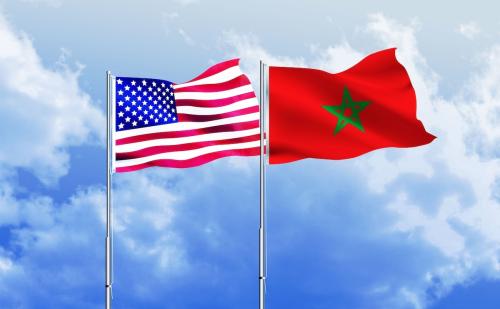Can nation-building work? A close follower of the news might be forgiven for thinking, no. East Timor, long viewed as an impressive example of the capabilities of the United Nations, is going up in smoke. The Iraq mission, after three years, has little to show for the huge effort, budgetary expense and cost in blood. After looking like a relative success of “nation-building lite,” Afghanistan may be regressing.
Is the idea of helping a country rebuild itself after conflict simply too daunting these days? Perhaps we have made the job too hard. While the leaders of the 1940s may indeed have been somewhat better at nation-building than we have been since, their job was slightly easier, too. Most of the states we’re trying to rebuild today are either ethnically more complex than Japan and Germany, or less economically developed than those two countries were prior to World War II, or both. What’s more, there are typically many actors in any nation-building mission now, which can create policy confusion. Other trends in world affairs—the rise of nationalism, the easy availability of small weaponry around the world—have complicated reconciliation efforts.
On balance, there has been a roughly 50 percent success rate since the 1950s. Many nation-building efforts fail, and some are easy to remember—Bosnia until 1995, Rwanda and Angola in the early 1990s, Haiti and Congo and Somalia today. But equally true, Cambodia, Mozambique, the Western Sahara, Guatemala, Panama and now even much of West Africa have put behind them years of horribly destructive violence and begun, with the help of peacekeepers, U.N. development specialists and others, to reconstruct their countries. Most are only partial successes; at the end of the day, these are not classic Jeffersonian democracies. But at least they’ve become nonproblem states—and far better places for their citizens to live.
Between the stunning successes of the post-World War II years and the disheartening setbacks of recent times, a great deal happened. In the 1950s, the Republic of Korea and Taiwan began to modernize, due largely to U.S. assistance. But U.S. efforts to boost development in Latin America, through force of arms as well as economic and diplomatic levers, were far less impressive. In the 1960s, as colonialism wound down, the European powers proved relatively weak themselves at nation-building in Africa.
We can get better at promoting peace—and building effective civil institutions— in strife-torn nations. But we should also recognize that, because of the nature of human beings and unfamiliar societies, some things will always be beyond our control. As Stanford professor Steve Stedman, researchers at the U.S. International Peace Academy and others have pointed out, when there are ongoing wars, nation-building becomes especially difficult. See Iraq. When there are multiple internal and external actors interested in maximizing their power (Afghanistan), when valuable resources increase the stakes of holding onto disputed territory (Congo) and when extremist elements or “spoilers” have little interest in any settlement (Jonas Savimbi in Angola, before he was killed), peacemaking becomes problematic. So, expectations have to be realistic. Some “failed” countries, with deeply entrenched conflicts, will take a very long time to turn around even with a sustained international commitment.
Nation-building is not for the fainthearted. It will often fail, or at least fall far short of aspirations. And sometimes failure is painful enough that perhaps it would have been better not to have made the attempt. But compared with the alternative of letting countries wallow in anarchy, violence and misery, it’s our only choice.
The Brookings Institution is committed to quality, independence, and impact.
We are supported by a diverse array of funders. In line with our values and policies, each Brookings publication represents the sole views of its author(s).



Commentary
Op-edNation Building: Not for the Fainthearted
June 5, 2006